Last Sunday, Chelsea hosted Everton in the Premier League. The match also marked the return of Carlo Ancelotti to Stamford Bridge; where he won a domestic double for the Blues back in 2010. However, his return ended bitterly as his team got thrashed 4–0 by the home side.
The result was pretty shocking for many. Since his arrival at Goodison Park, Everton have never lost a match whilst conceding more than one goal. Not only that, but the scoreline is also Lampard’s best result so far in the Premier League. Before this, his side never won a league match with more than a three goas difference. How did that happen? This tactical analysis will inform you how the match unfolded.
Lineups
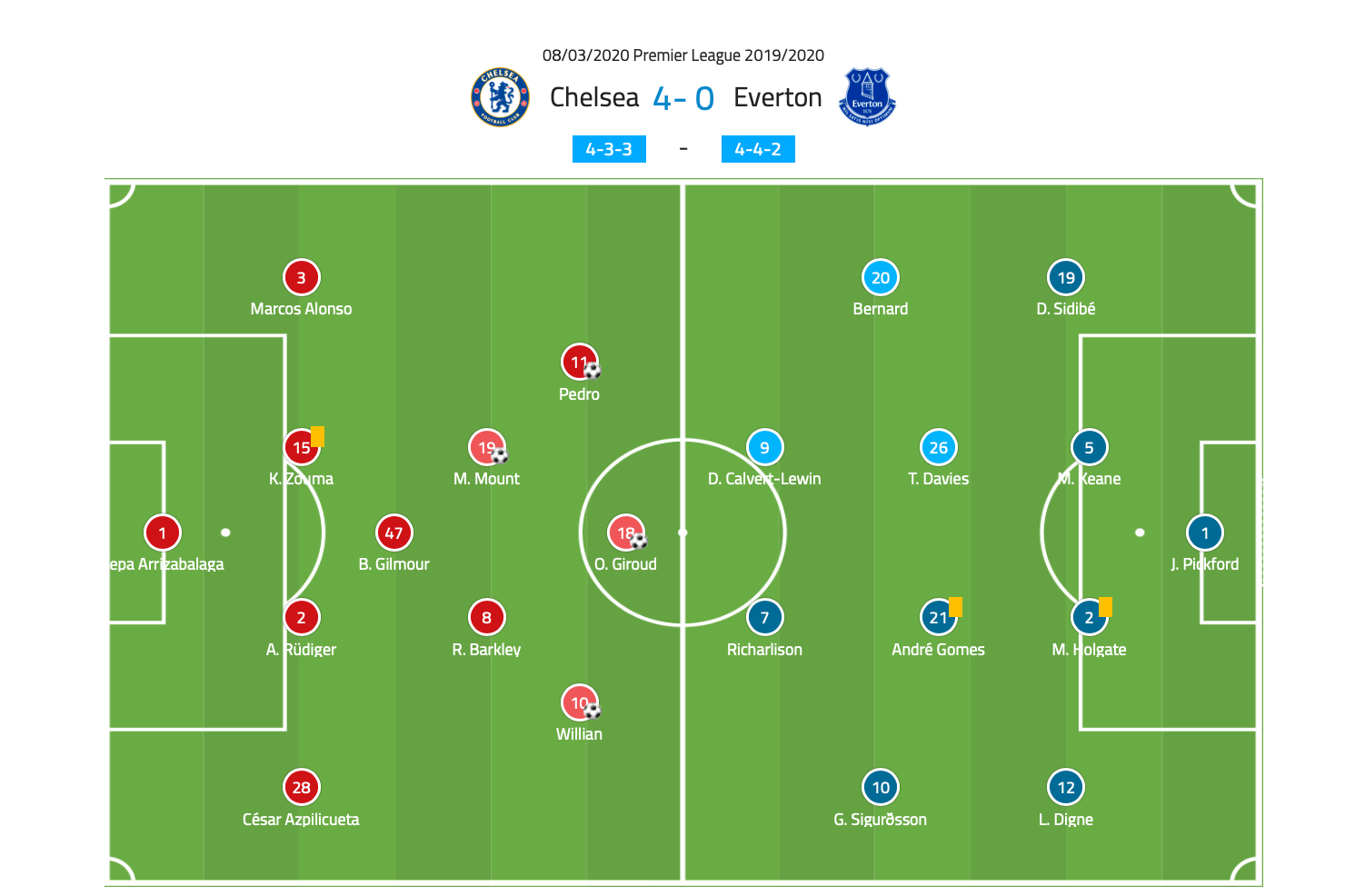
Lampard chose 4–3–3 in this game. The duo of Antonio Rüdiger and Kurt Zouma were picked at the heart of the defence. In front of them, teenage prodigy Billy Gilmour started the game. Upfront, Olivier Giroud led the frontline; supported by Willian and Pedro Rodríguez in the flanks. Young names like Reece James, Faustino Anjorin, and Armando Broja filled Chelsea’s bench.
In the opposite side, Ancelotti picked his regular 4–4–2 for Everton. Djibril Sidibé and Lucas Digne started as the full-back pairing. In the engine room, Tom Davies was chosen alongside André Gomes. The Toffees’ attacking line was filled with talisman Dominic Calvert-Lewin and Richarlison. Players like Moise Kean, Theo Walcott, and Anthony Gordon were among their substitutes.
Everton tried a different offensive approach
Compared to their previous matches under Ancelotti, Everton opted to use different attacking tactics in this game. Instead of playing more direct balls from Jordan Pickford to Calvert-Lewin, the visitors tried to build their attacks from the back.
Tactic-wise, Everton’s main offensive structure stayed the same since the Italian’s arrival in December. The wingers were tasked to move inside, and the full-backs provide the width in Everton’s attacks. On top of that, Richarlison was asked to drop a bit from his initial position, to play in parallel with the tucked-inside wingers. The main objective behind those was to overload the area in between the lines. Furthermore, it also allowed the attackers to combine easily.
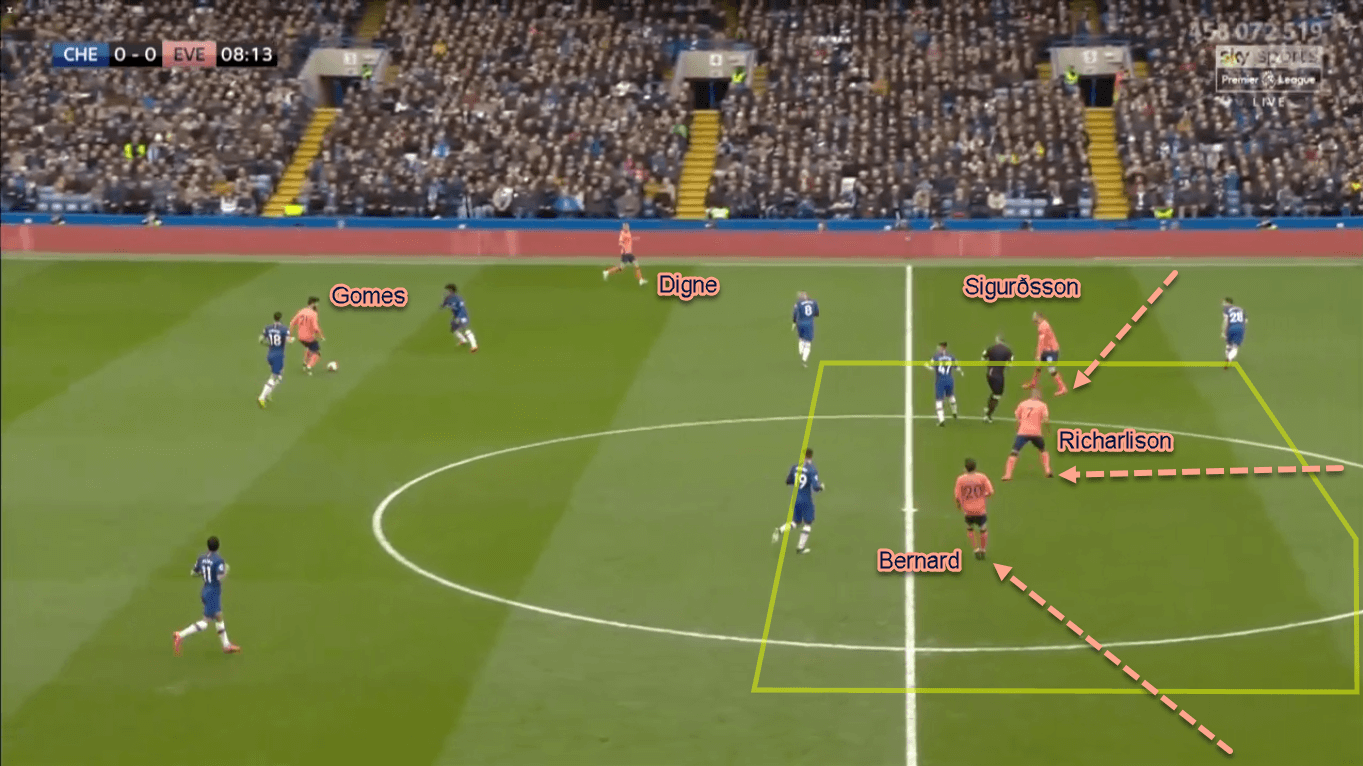
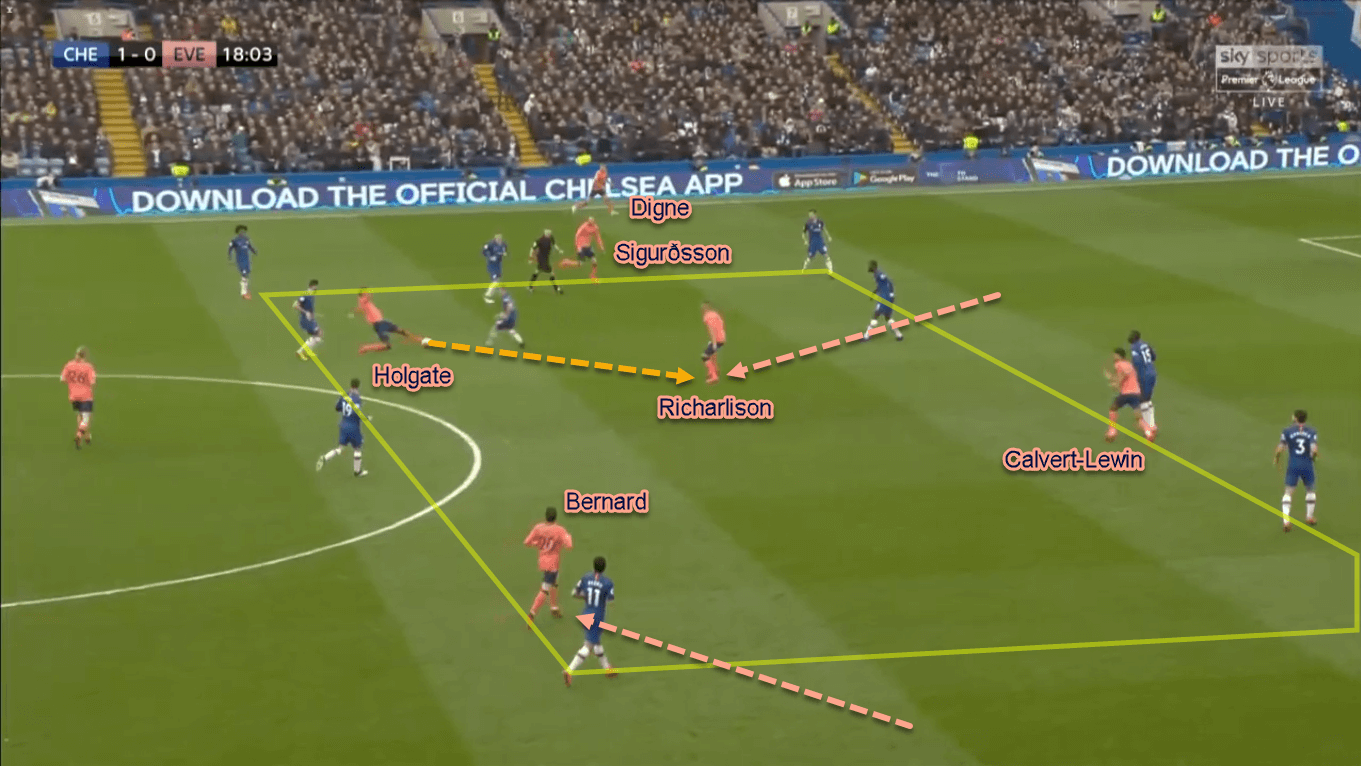
In possession, Everton used their centre-backs heavily. Against Chelsea’s lone striker, the centre-halves pairing would have enough time and space with the ball. Their task was to find the narrow attackers in between the lines with their line-breaking passes. If one of Chelsea’s midfielders step up to close the centre-back, either Gomes or Davies would drop to help the build-up.
After getting the ball in between the lines, the attackers then would send the ball wide. In the flanks, both full-backs were ready to make overlapping runs and receive the ball. Then, they were tasked to send crosses into the box.
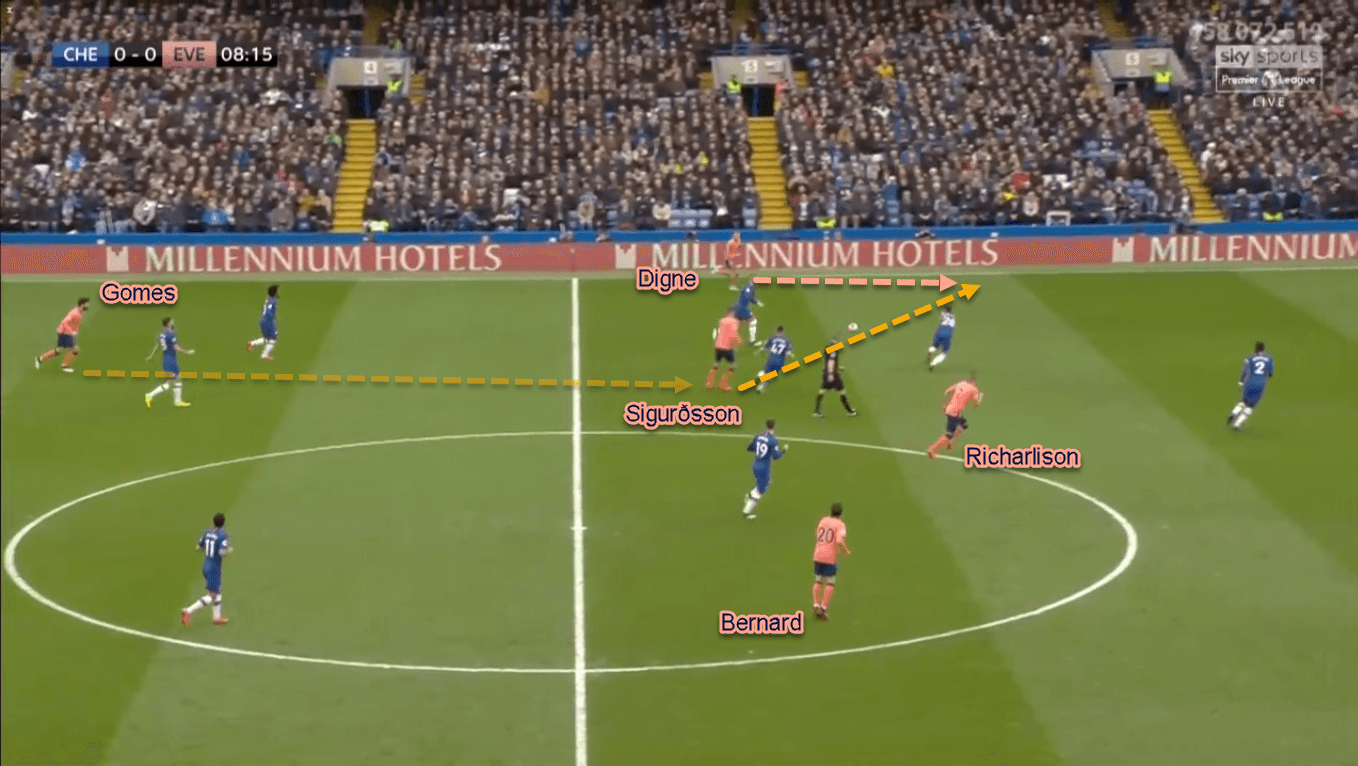
Issues in Everton’s attacks
In this part of the analysis, we’re going to take a look at the reoccurring problems in Everton’s offensive plays. Mainly, the visitors were quite slow when having possession. This would allow Chelsea enough time to retreat and reorganise their defensive block. Everton’s forwards were not so active either in rotating their positions to confuse the home side. Such issue forced Everton to play backwards so many times.
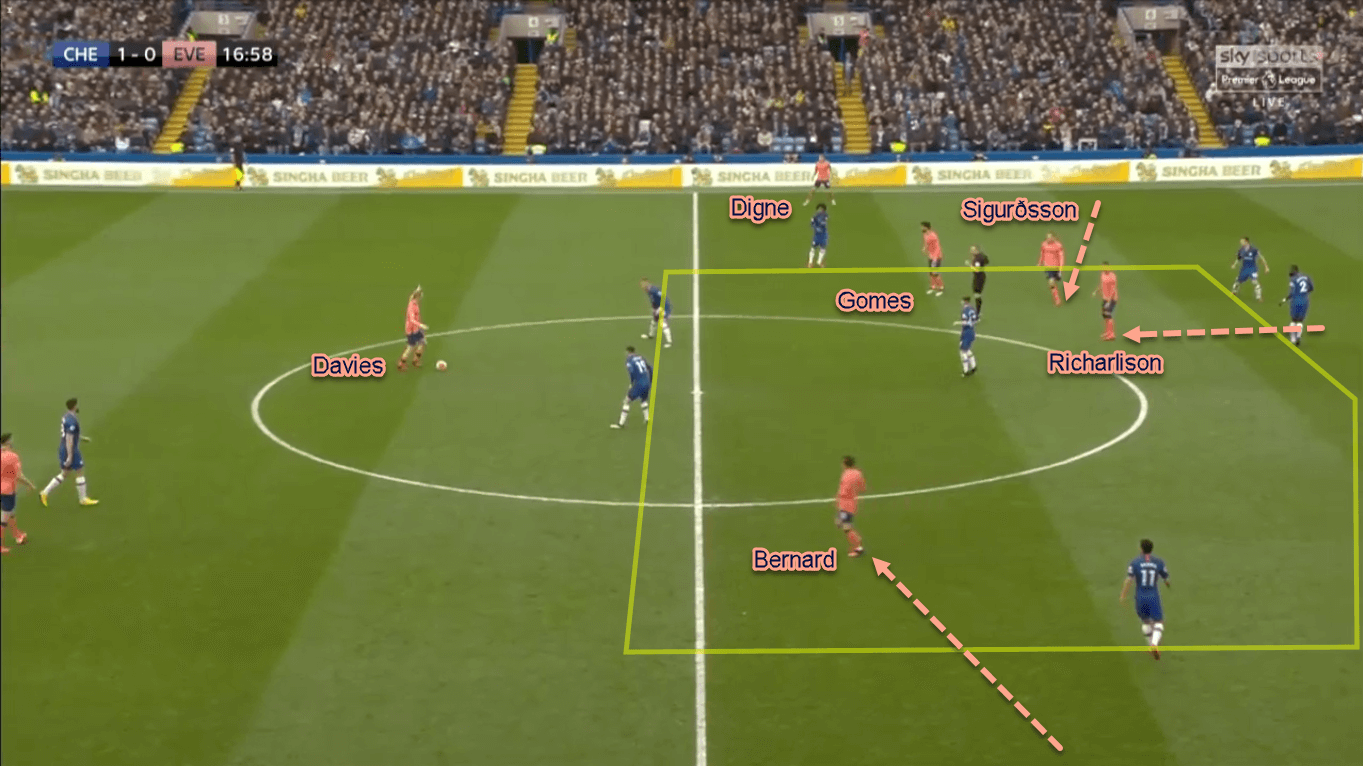
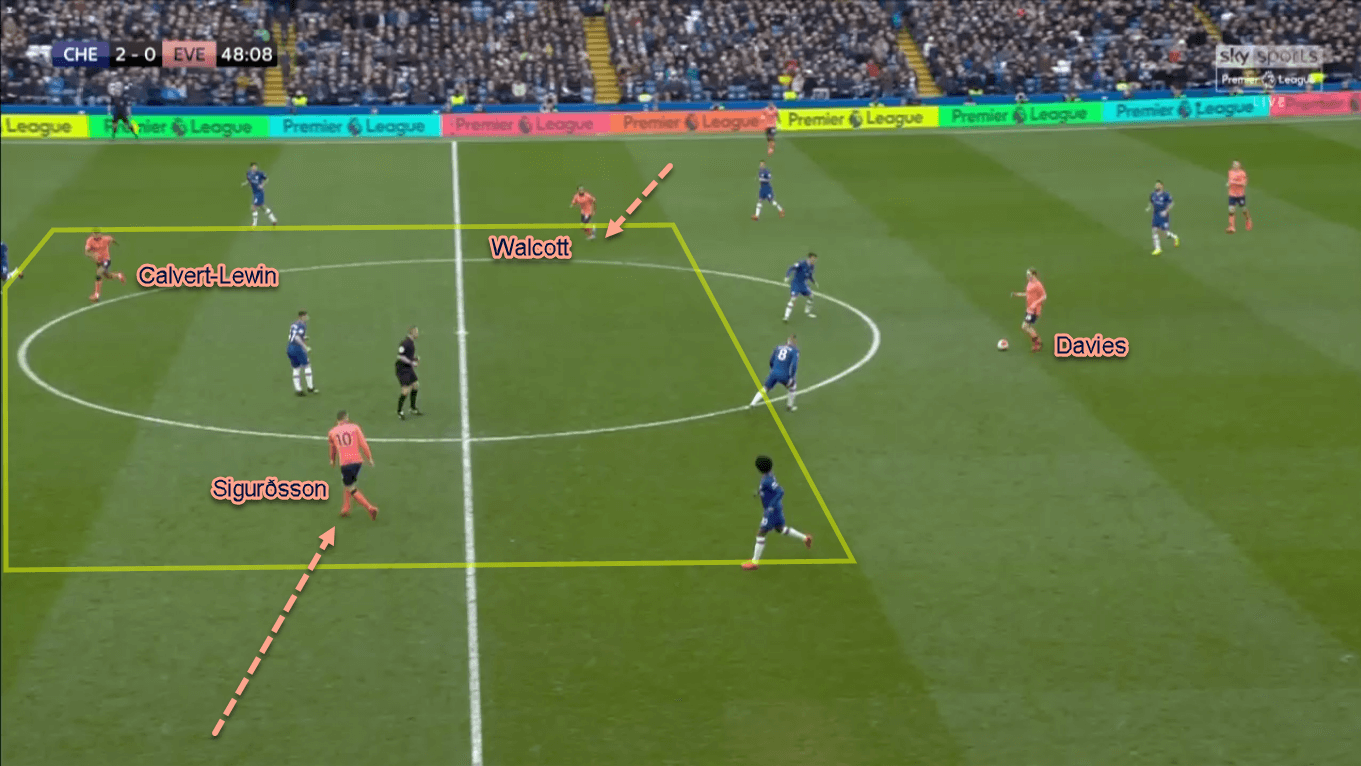
Even when Everton had the ball, they were a bit poor in their deliveries. There were so many inaccurate passes, which gave Chelsea transition opportunities. Looking at the stats, Everton only had 72.09% success rate with their forward passes. They were only able to make 29 passes into the final third, equal to 60.41% successful rate. Their lack of speed in distributing the ball was an important factor behind this.
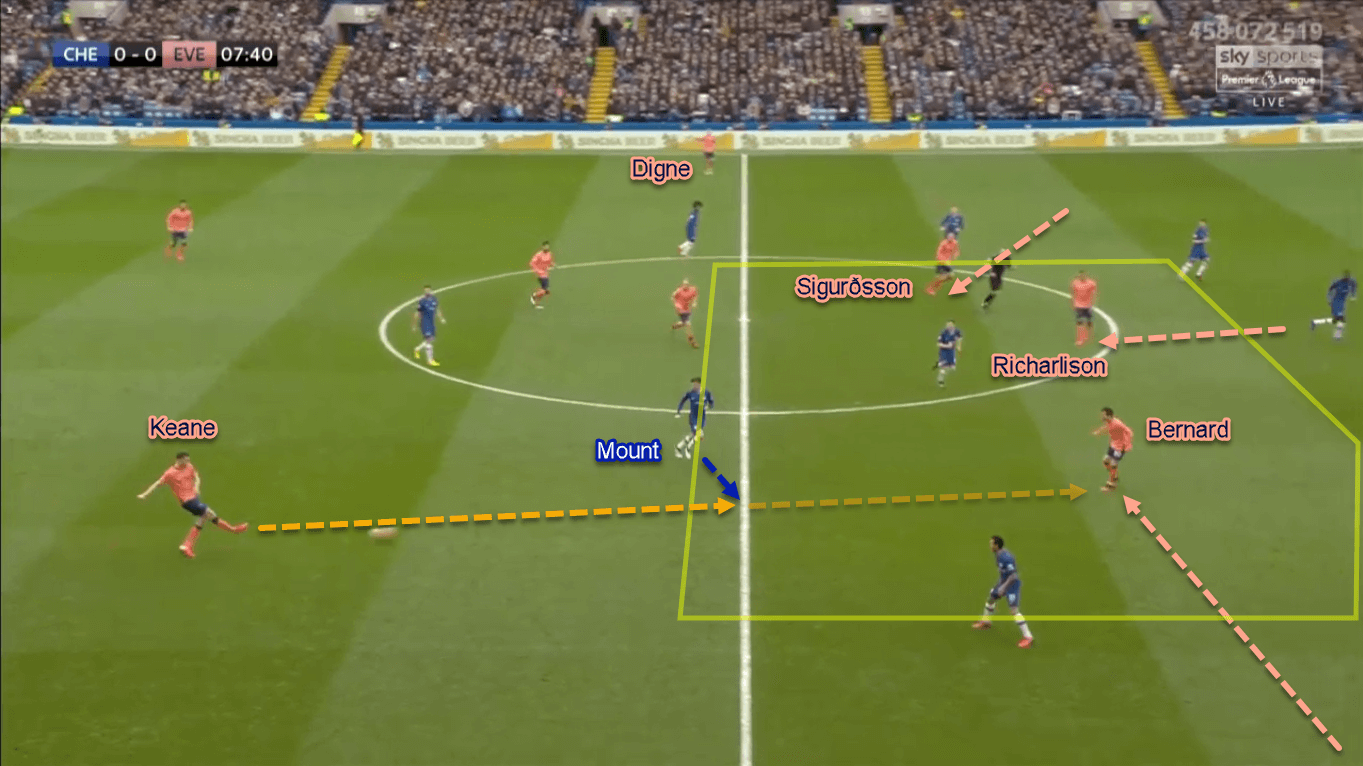
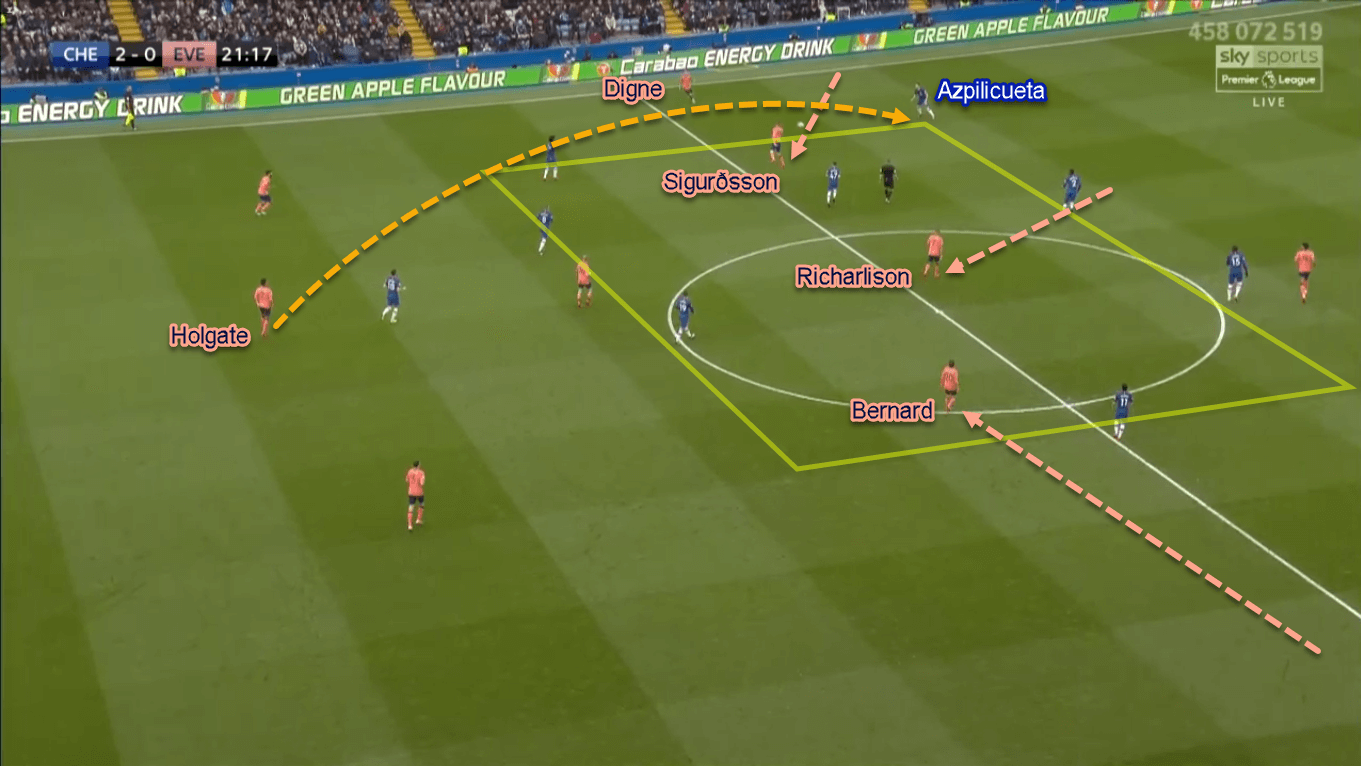
Chelsea’s defensive tactics
Defensively, Chelsea used a mid-block 4–1–4–1. In this system, lone pivot Gilmour had ample space to defend; making him a target for Everton’s narrow attackers. However, Lampard deployed some interesting tactics to help the Scottish youngster.
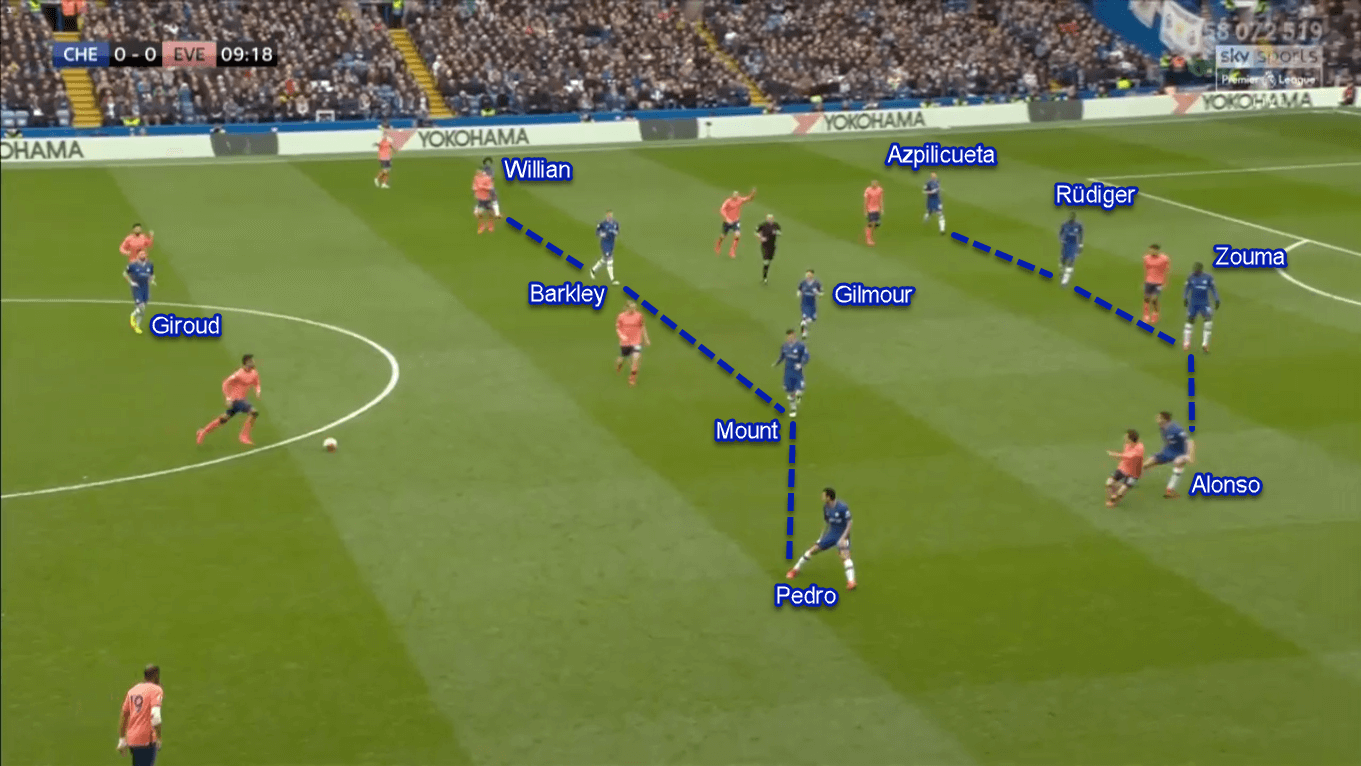
Mainly, he would ask his full-backs to step forward and follow their respective Everton wingers. By doing so, Chelsea would have additional bodies to help Gilmour in between the lines. In the process, both César Azpilicueta and Marcos Alonso would press their men aggressively. The objective was to prevent their opponent from receiving the ball comfortably in the dangerous area.
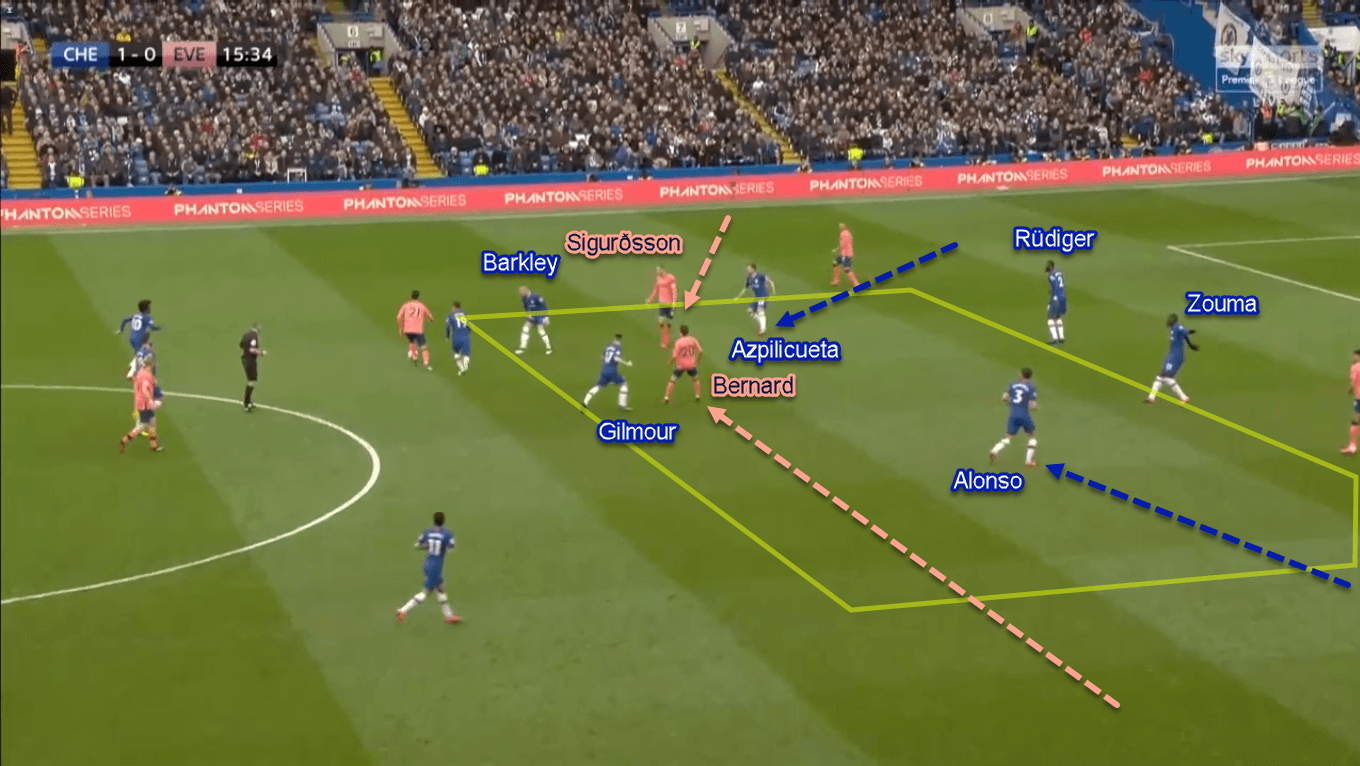
Not only the full-backs, but Chelsea also utilised Rüdiger to help Gilmour. It’s because the German played in a similar area with Richarlison; who often dropped in between the lines. Rüdiger’s task was no different from his full-back comrades. That’s to close down Everton’s inside attacker.
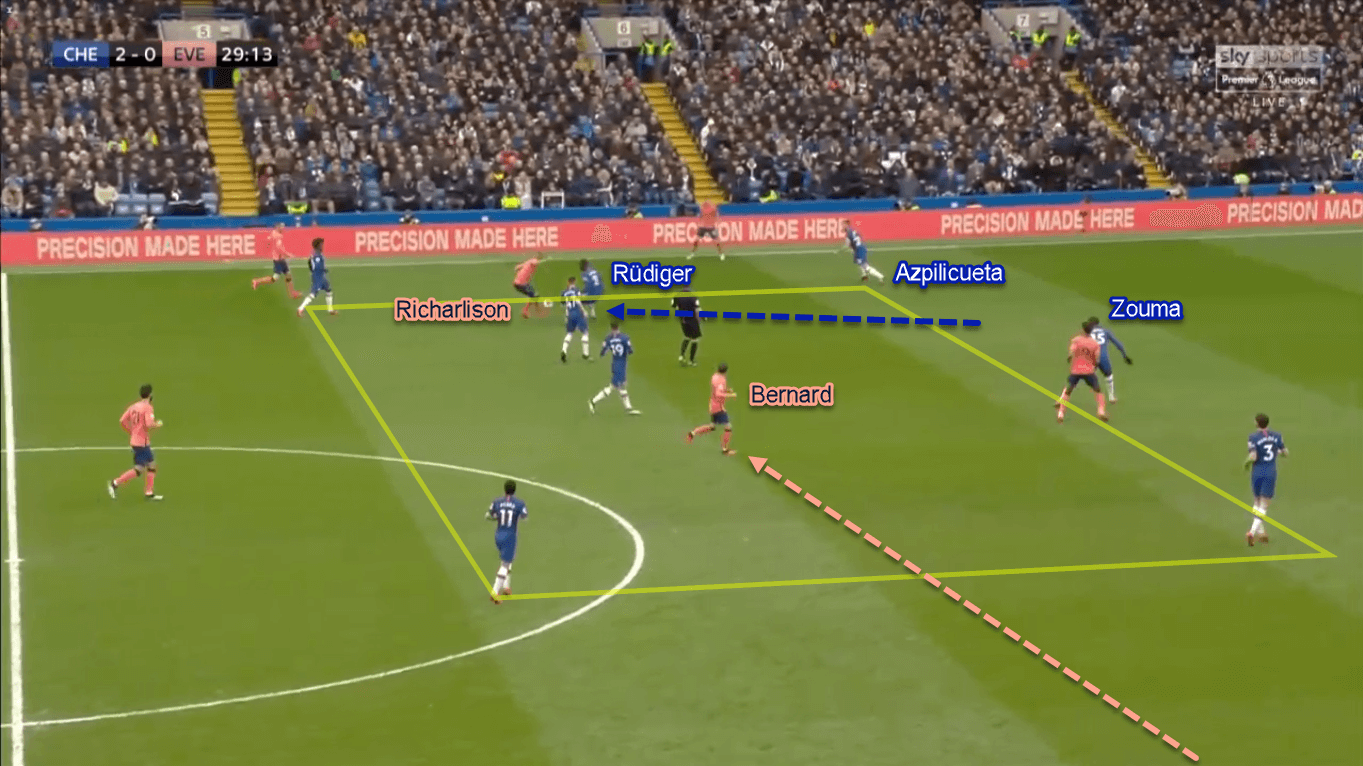
As mentioned before, Everton were not good in possession, especially when spraying the ball forward. Another reason behind that was the brilliant display from Chelsea’s midfield. They were quite compact horizontally, which prevent Everton from utilising the channels. Not only that, but the midfielders were also good in reading the Toffees’ attacking plays. Per the statistics, Lampard’s midfield trio combined for ten interceptions.
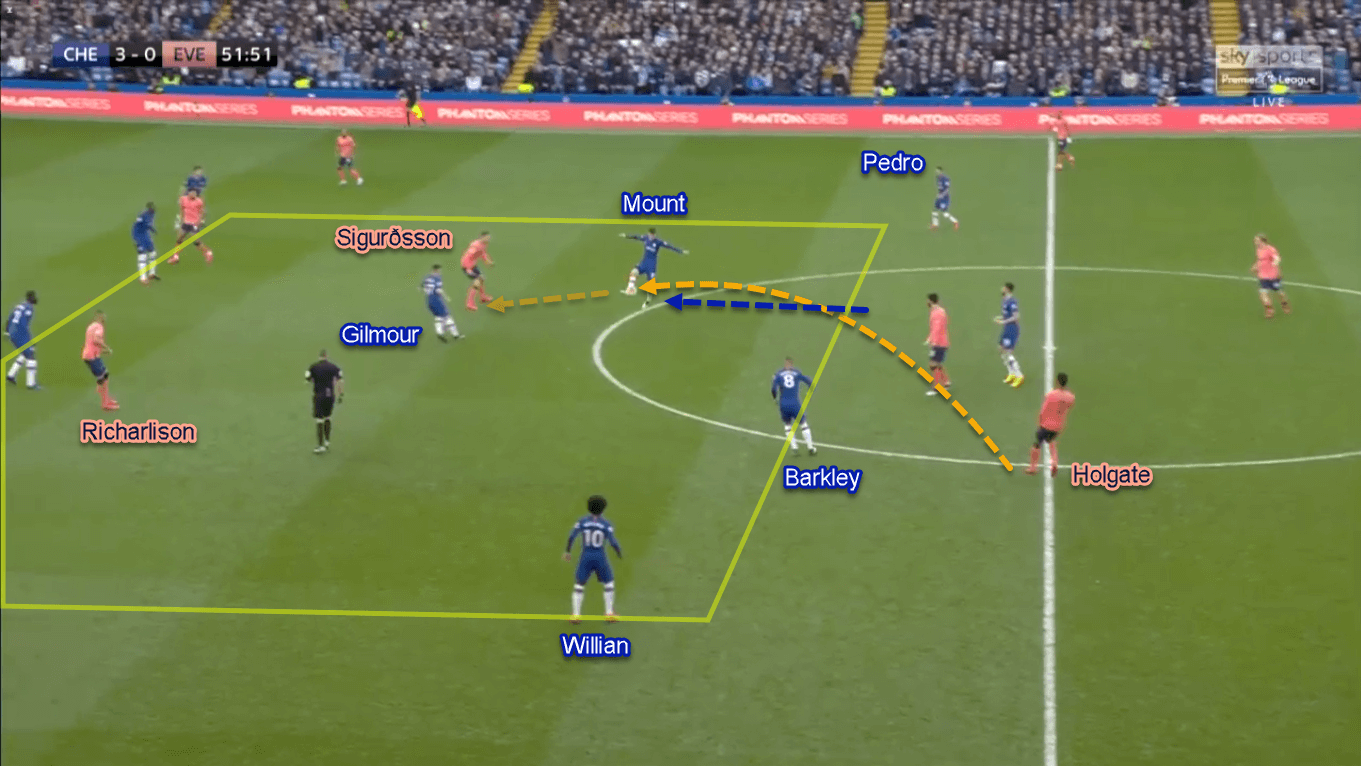
Chelsea’s no-nonsense approach
Initially, Chelsea used a direct approach to their attacks. They did that whenever Everton tried to press rather aggressively. In their direct approach, Chelsea utilised Giroud’s physical prowess to win the aerial balls. Looking at the stats, the Frenchman made ten aerial duels and won five (50%) of them.
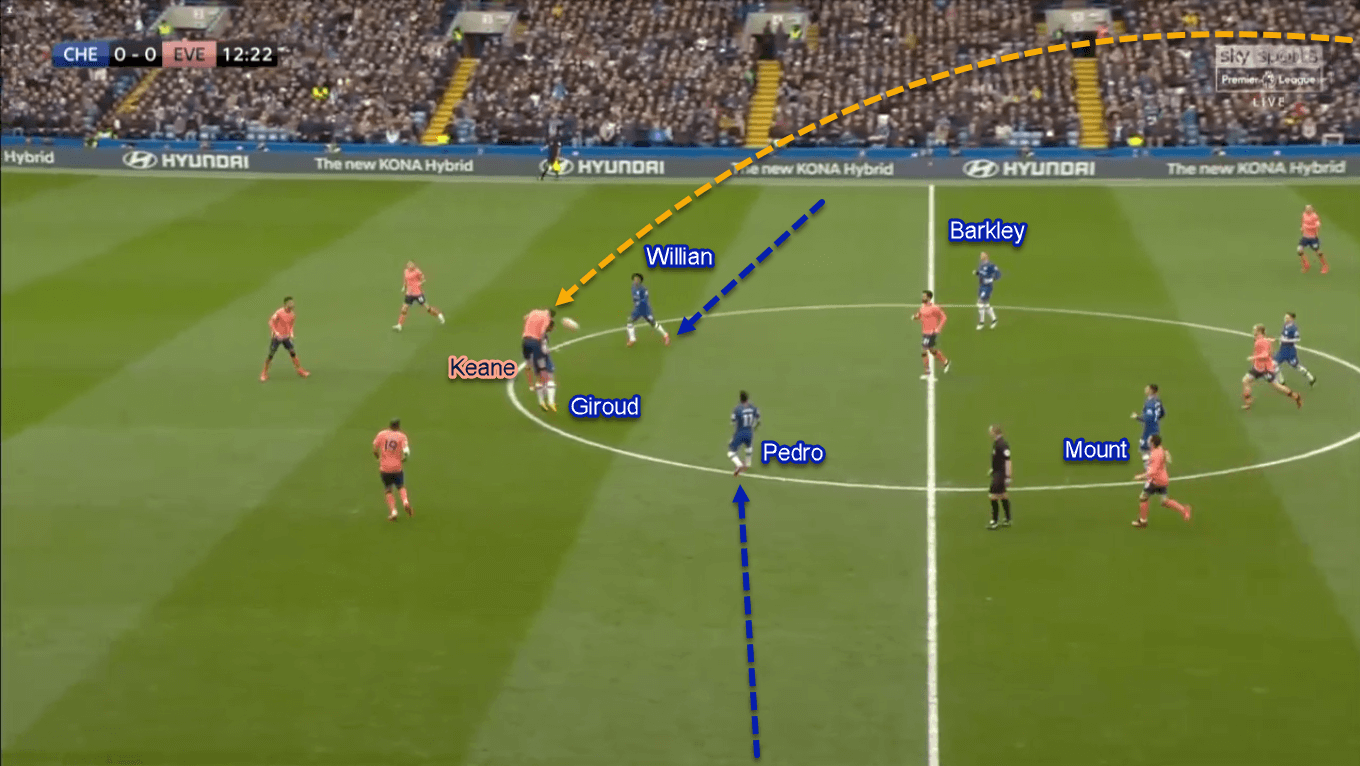
In the no-nonsense attacking tactics, Chelsea also utilised their wingers and advanced midfielders to support Giroud. Mainly, Lampard tasked those men to tuck inside and come nearby the French striker. By coming close, they would offer Giroud multiple lay-off options to progress the ball.
Speaking of direct approach, the Blues also used another facet of the method. That facet being counter-attack. As mentioned before, their defensive discipline and Everton’s lack of on-ball quality allowed Chelsea to win the ball back quite easily.
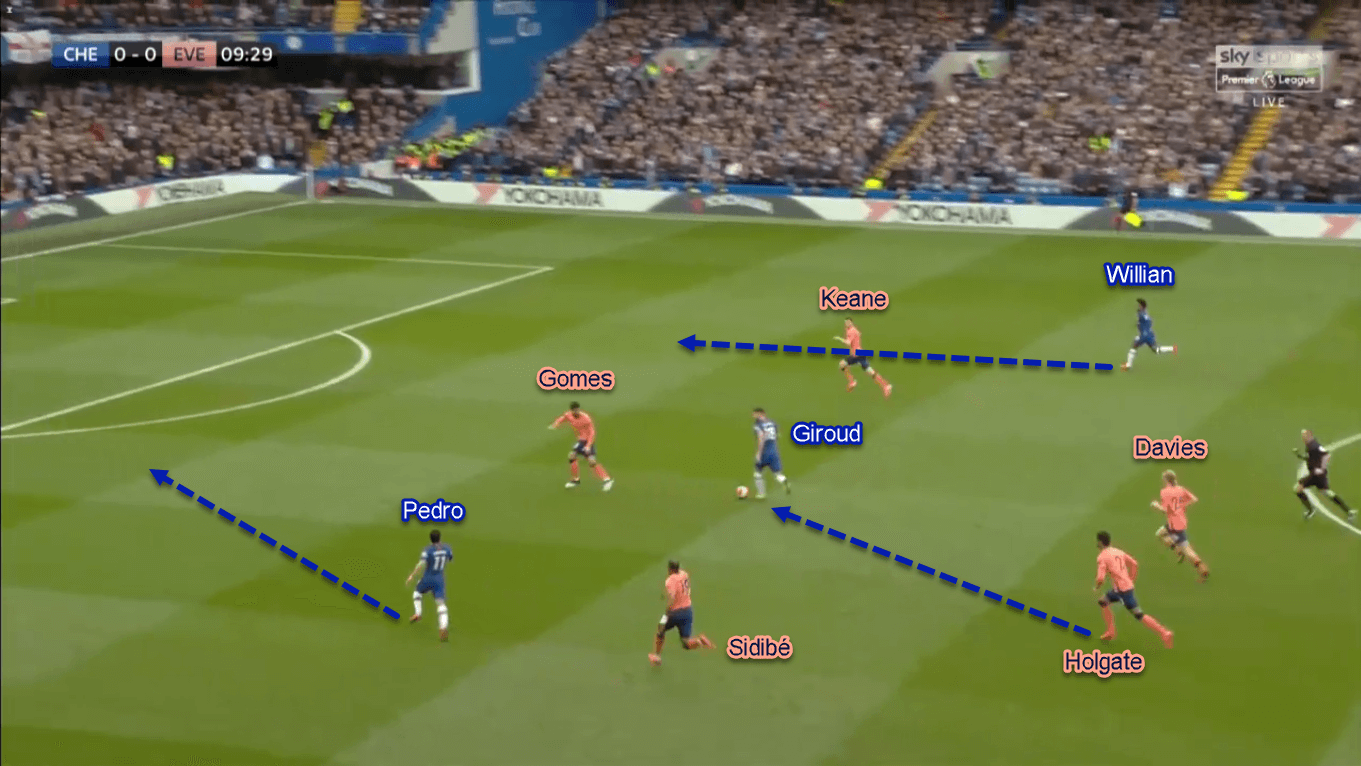
In their counter-attacks, Chelsea would try to exploit the area left by Everton’s overlapping full-backs. Both Willian and Pedro were tasked to make darting runs in behind with their trailblazing pace. Giroud’s presence in the central lane would pin Everton’s centre-backs; which helped Chelsea’s wingers to be free in the half-spaces. For a fact, Pedro’s goal resulted from an offensive transition.
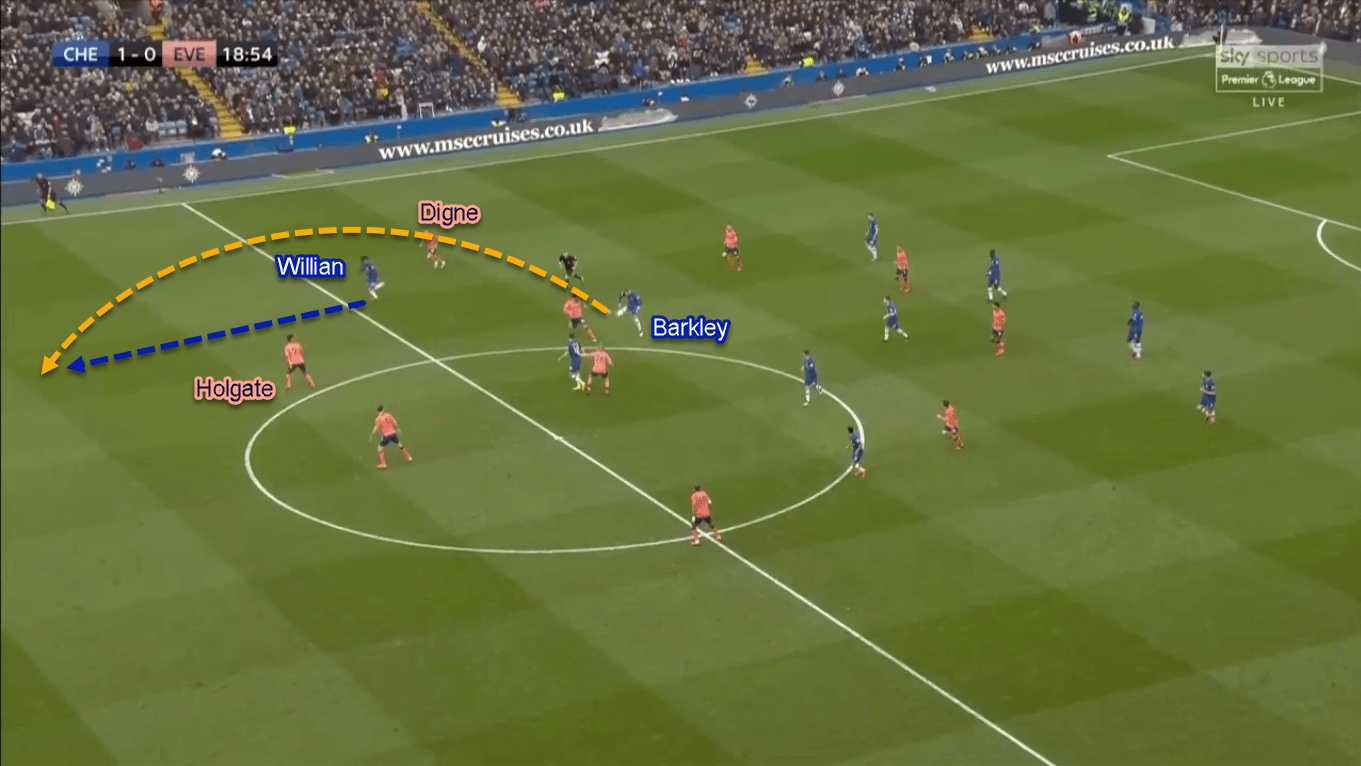
Happy Gilmour
When having the ball, Chelsea tended to build their attacks through Gilmour. No wonder that the 18-year-old ended the game with 76 passes; most in the match. In possession, Gilmour positioned himself in between Everton’s attacking and midfield line. Due to the visitors’ lack of compactness — which will be explained later — Gilmour had ample time and space to distribute the ball.
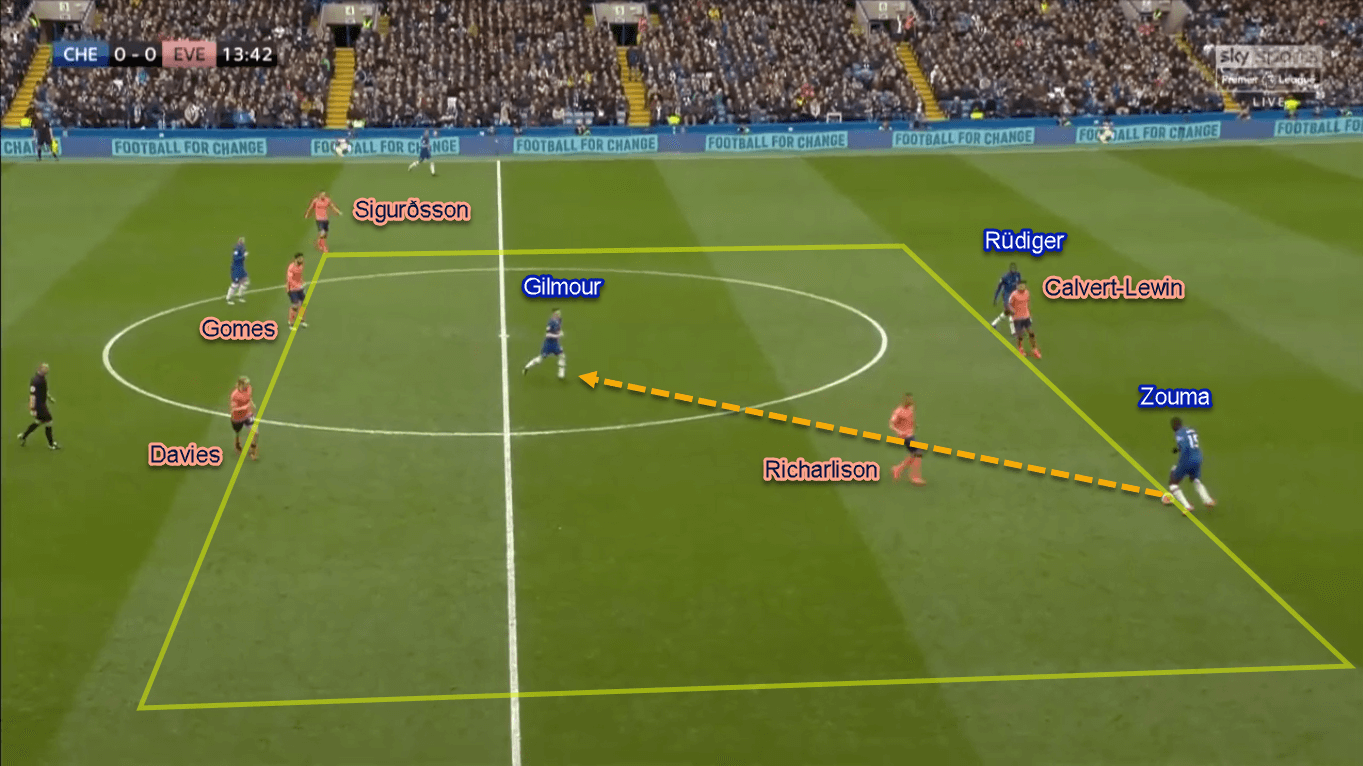
In front of the Scotsman, Chelsea deployed a bit similar offensive structure as Everton. The full-backs provided the width, while the wingers tuck inside. However, there was a big difference. Lampard gave more offensive freedom for the inside attackers; unlike Ancelotti. This means both Willian and Pedro would often rotate their positions with Barkley and Mount. Such fluid movements disrupted Everton’s defensive focus for a lot of times.
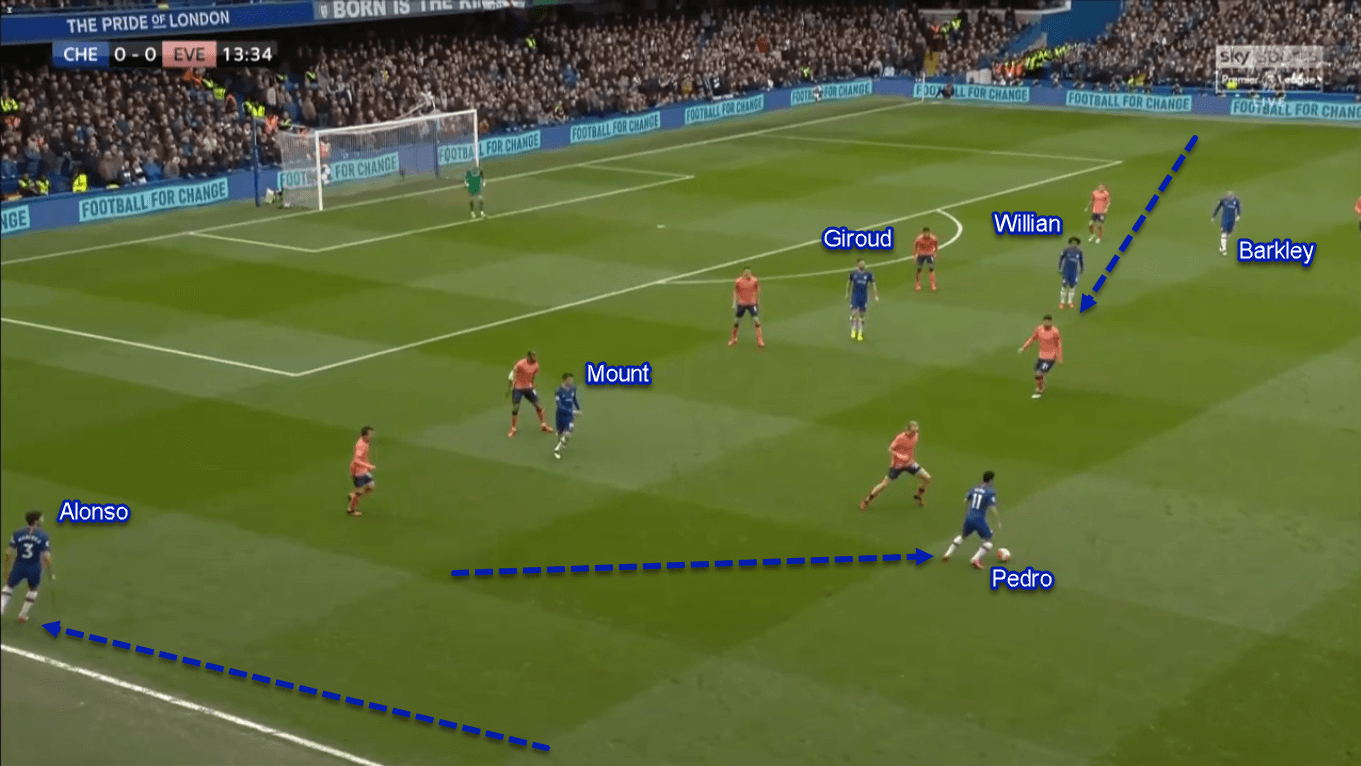
Everton’s defensive tactics and its issues
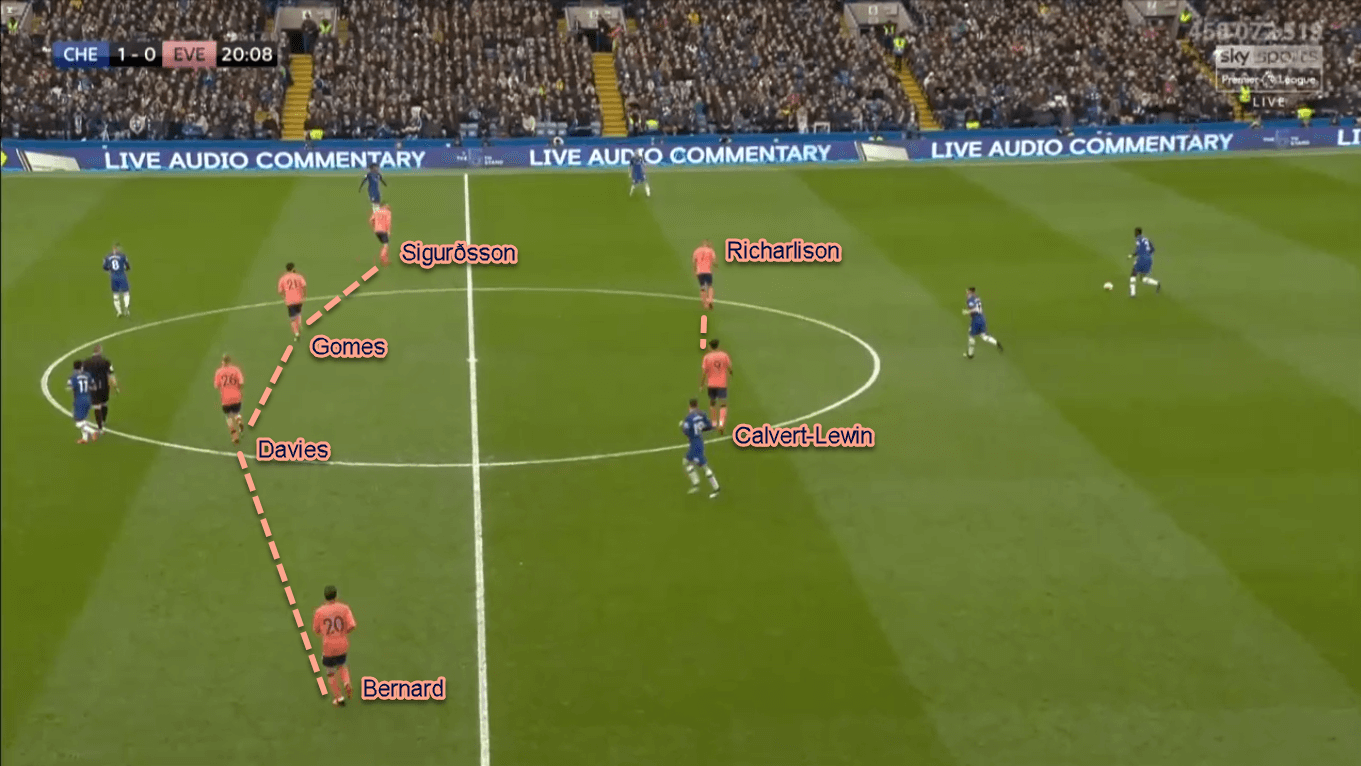
Defensively, Everton used their regular mid-block 4–4–2. However, it was not as compact as expected. Vertically, it allowed space in the areas between the lines. As mentioned before, Gilmour enjoyed the first area in Chelsea’s build-ups. The 18-year-old would often attract the attention of Gomes and/or Davies when he had the ball. This would further allow Chelsea a bigger advantage.
Gomes and/or Davies’ aggression to close Gilmour down was often not calculated very well. Their pressure to Gilmour would allow Chelsea another space in between the lines; now in a more dangerous area. The Blues often utilised the advanced area with Giroud. The forward was tasked to drop a bit from his area before combining with his nearby attacking comrades.
Horizontally, Everton were not compact either. There were many occasions where Chelsea could access the channels easily. To do that, Lampard instructed Barkley and Mount to drift a bit wide in Chelsea’s attacks. This, added with Chelsea’s fluid rotations, stretched Everton’s midfield line for a couple of times. For a fact, all Chelsea goals bar Giroud’s started from exploiting the gaps in Everton’s defensive block.
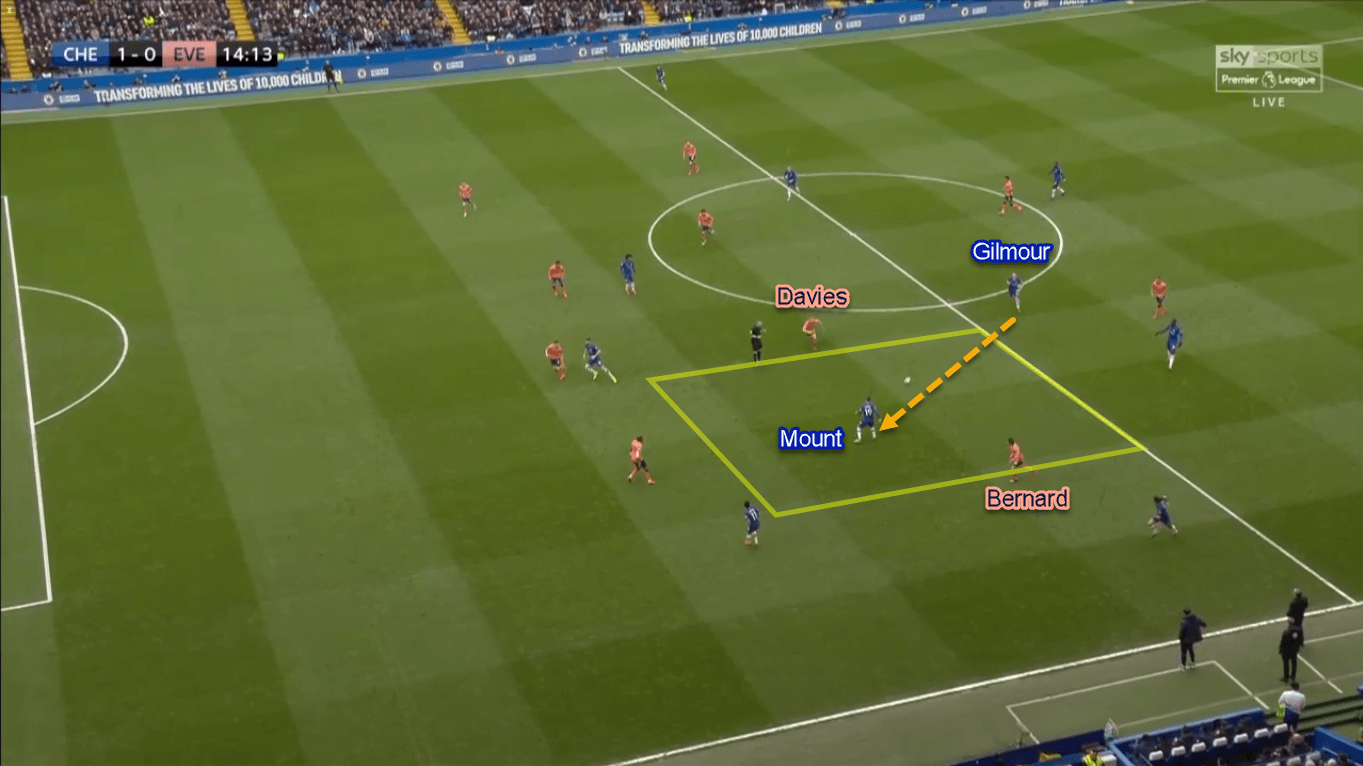
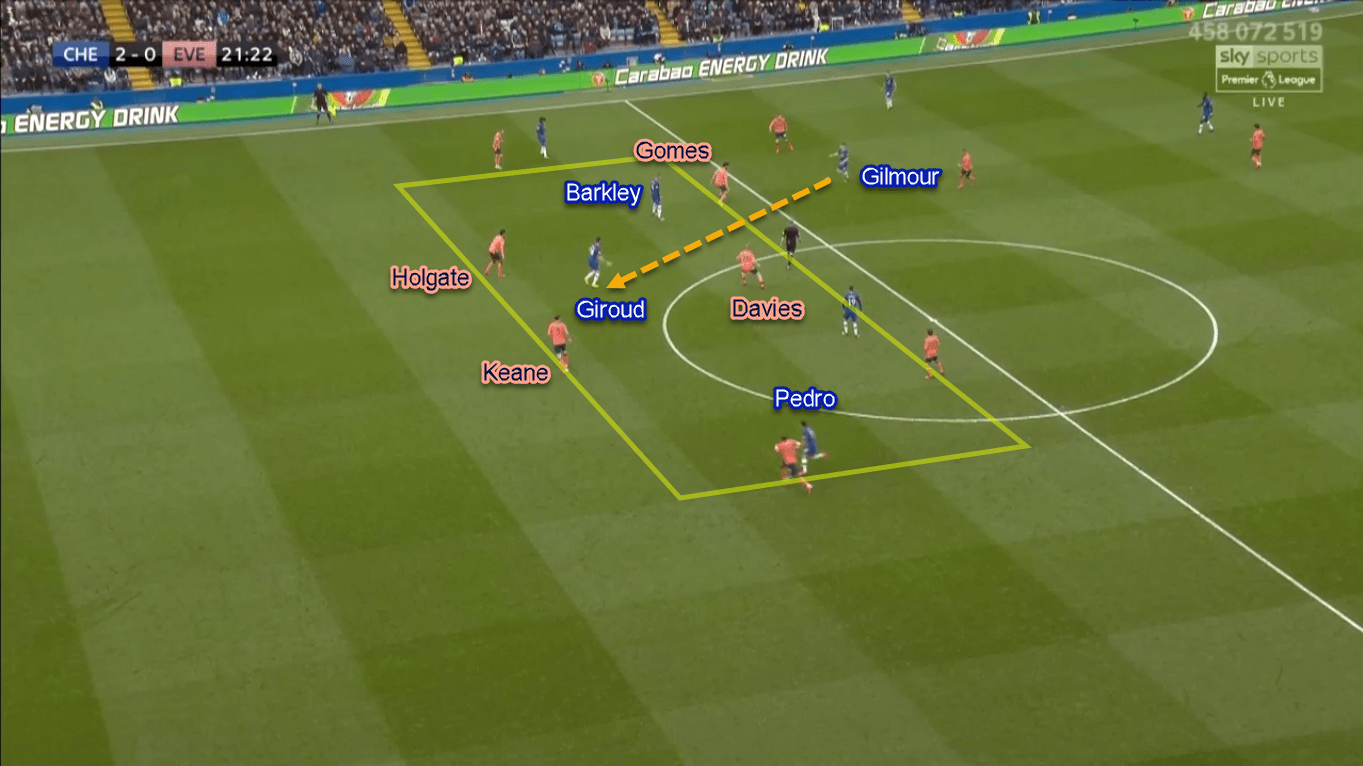
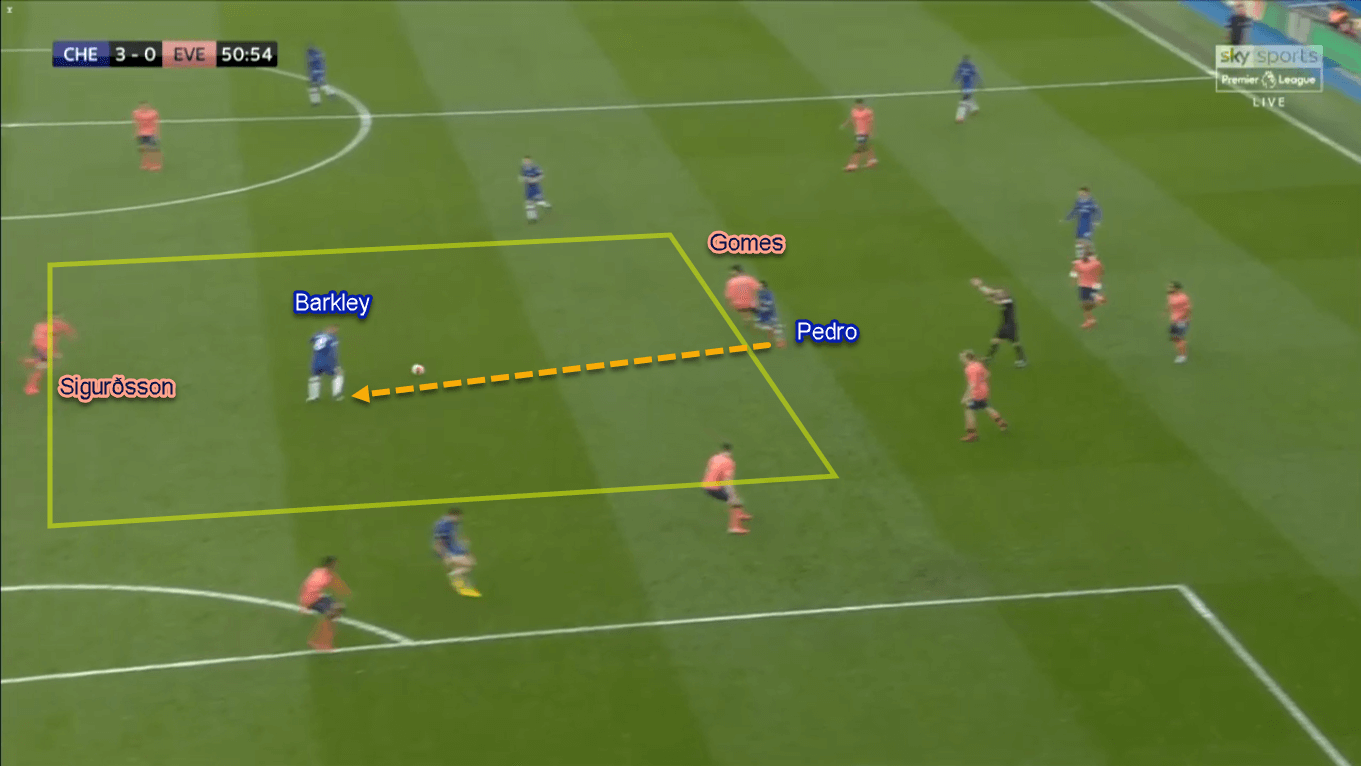
Conclusion
Three league games against his mentors, three victories for Lampard. What an achievement for the 41-year-old manager. Despite Chelsea’s recent shaky performances, Lampard once again proves that he’s one of the best young tacticians in the world. His creativity and boldness in his tactics were the reason behind that.
Oppositely, Ancelotti’s Everton had to return home with a disappointment. The culprit was his failed tactical experiment. Nevertheless, his players were also responsible because of their poor displays. Apart from Pickford, none of Ancelotti’s men played up to the expectations. Don Carlo must find an immediate solution to help Everton facing a busy schedule in the upcoming 30 days.




Comments